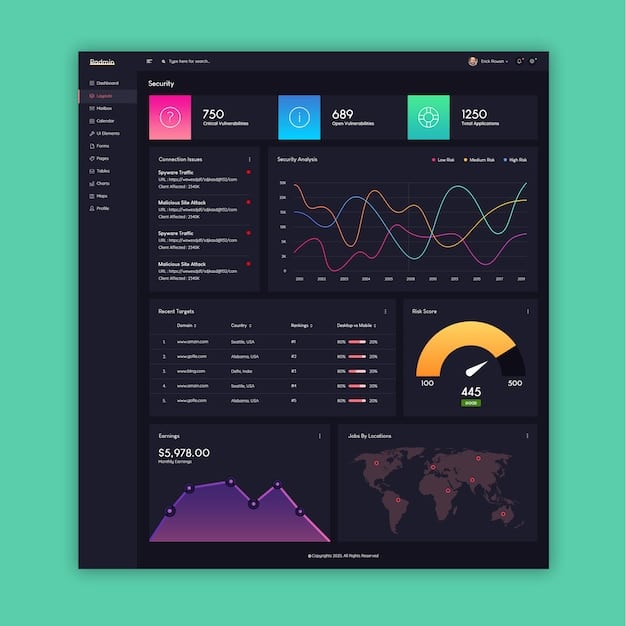Automate CRM Tasks: Reclaim 8 Hours a Week Now!

Stop wasting time on repetitive CRM tasks by automating three key areas: data entry, lead nurturing, and reporting, potentially freeing up to 8 hours per week for more strategic activities.
Are you constantly drowning in tedious, repetitive tasks within your CRM? It’s time to stop wasting time. By strategically automating just three key areas in your CRM system, you can reclaim up to 8 hours per week, freeing you up to focus on what truly matters: growing your business.
Unlock Productivity: Automate Data Entry in Your CRM
Data entry is a time-consuming, error-prone process that can easily eat into your valuable work hours. Automating data entry not only saves time but also improves data accuracy and consistency within your CRM.
Importing and Updating Contacts Automatically
Manually entering contact information is a classic time-waster. Automate this process by integrating your CRM with other tools and setting up rules for automatic importing and updating.
Using Web Forms to Capture Leads Directly
Instead of manually adding leads from website inquiries, use web forms that directly feed into your CRM. This eliminates manual entry and ensures no leads slip through the cracks.
- Automate contact creation from email signatures.
- Use third-party apps to scan business cards and automatically input data.
- Set up rules to automatically update contact information based on email interactions.
By automating these data entry tasks, you ensure that your CRM data remains accurate, up-to-date, and readily available, without requiring hours of manual effort.

Maximize Engagement: Automate Lead Nurturing Sequences
Effective lead nurturing requires consistent communication and personalized interactions. Automating lead nurturing sequences ensures that your leads receive timely and relevant information, guiding them through the sales funnel without constant manual intervention.
Creating Automated Email Campaigns Based on Lead Behavior
Craft email campaigns triggered by specific lead actions, such as visiting a particular page on your website or downloading a resource. This automated approach ensures that leads receive the right message at the right time.
Implementing Lead Scoring for Targeted Communication
Automate lead scoring to identify your most engaged and promising leads. This allows you to focus your sales efforts on the leads most likely to convert, increasing your overall efficiency.
- Set up automated welcome emails for new leads.
- Create drip campaigns based on lead segmentation criteria.
- Utilize automation to personalize email content based on lead behavior.
Automating lead nurturing sequences allows you to scale your sales and marketing efforts without sacrificing personalization or engagement, ultimately improving your conversion rates.
Streamline Reporting: Automate CRM Report Generation
Generating reports can be a tedious and time-consuming task, especially if you’re manually pulling data from your CRM. Automating report generation provides real-time insights and helps you make data-driven decisions without wasting valuable time.
Scheduling Automated Report Delivery
Set up automated report delivery to receive key performance indicators (KPIs) and other essential data on a regular basis, without having to manually generate the reports yourself. This saves time and ensures you’re always informed.
Customizing Dashboards for Real-Time Insights
Create customized dashboards within your CRM to visualize key metrics and track progress towards your goals. Automated dashboards provide a quick and easy way to monitor performance and identify areas for improvement.

- Automate weekly sales performance reports.
- Generate monthly reports on lead generation and conversion rates.
- Set up alerts for critical changes in key metrics.
Automating CRM report generation not only saves time but also empowers you with the insights you need to make informed decisions and drive business growth.
Optimize Workflows: Integrating Automation Across Your CRM
Beyond the specific tasks, integrating automation across your CRM requires understanding how different processes can work together seamlessly. A strategic approach ensures consistent and efficient operations.
Connecting Marketing Automation with CRM Data
By connecting your marketing automation platform with your CRM, you can ensure that all lead data is synced automatically. This integration enables better targeting and personalization, as well as a more holistic view of your customer journey.
Sales Automation for Task Management
Automate task creation and assignment based on specific triggers or events within your CRM. This helps sales teams stay organized, prioritize their activities, and ensure that no tasks fall through the cracks.
Implementing workflow rules, such as automatically assigning leads to sales reps based on territory or expertise, further streamlines operations and improves response times.
Choosing the Right Automation Tools
Selecting the right automation tools is crucial for maximizing efficiency and ensuring a seamless workflow. There are numerous CRM systems and third-party integrations available, each offering unique features and capabilities.
Evaluating CRM Platforms with Built-In Automation
Some CRM platforms offer robust built-in automation features, allowing you to automate data entry, lead nurturing, and report generation without the need for additional integrations. Consider these platforms if you’re looking for an all-in-one solution.
Leveraging Third-Party Integrations
If your current CRM lacks certain automation capabilities, explore third-party integrations that can fill the gaps. Many tools integrate seamlessly with popular CRM systems, providing enhanced automation features.
Examples of third-party integrations include email marketing platforms, task management tools, and data enrichment services. By choosing the right tools, you can tailor your CRM to meet your specific automation needs.
Best Practices for CRM Automation
Implementing CRM automation effectively requires a strategic approach and careful planning. Here are some best practices to ensure that your automation efforts deliver the desired results.
Define Clear Goals and Objectives
Before implementing any automation, define clear goals and objectives. What specific tasks do you want to automate? What outcomes do you expect to achieve? Having clear goals will help you focus your efforts and measure your success.
Prioritize Tasks for Automation
Not all tasks are created equal. Prioritize the tasks that consume the most time, are prone to errors, or have the greatest impact on your business. Automate these tasks first to maximize your ROI.
Test and Refine Your Automation Workflows
Once you’ve implemented your automation workflows, test them thoroughly to ensure they’re working as expected. Monitor their performance and make adjustments as needed to optimize their effectiveness. Continuous testing and refinement are essential for achieving optimal results.
Conclusion
By automating data entry, lead nurturing, and report generation in your CRM system, you can stop wasting time on tedious tasks and reclaim up to 8 hours per week. Implement these strategies today to boost productivity, improve data accuracy, and drive business growth. Don’t let repetitive tasks hold you back – embrace automation and unlock your full potential.
| Key Point | Brief Description |
|---|---|
| ⏱️ Automate Data Entry | Save time and improve accuracy by automating contact data entry. |
| 📧Automate Lead Nurturing | Engage and convert leads with automated, personalized email campaigns. |
| 📊 Automate Reporting | Gain real-time insights by automating the generation of CRM reports. |
| ⚙️ Integrate Automation | Seamless integration of workflow and automation across CRM for efficient operations. |
FAQ
▼
CRM automation involves using technology to streamline and automate repetitive tasks within a Customer Relationship Management system, such as data entry, lead nurturing, and report generation.
▼
By automating tasks like data entry and lead nurturing, CRM automation reduces manual effort, freeing up employees to focus on more strategic activities. This results in saved time and increased efficiency.
▼
Automating lead nurturing ensures consistent and personalized communication with leads, improving engagement and conversion rates. It also allows sales teams to focus on the most promising leads.
▼
Automated reporting provides real-time insights and data-driven information, which enables businesses to make more informed decisions quickly. This improves agility and fosters better strategic planning.
▼
Defining clear goals, prioritizing tasks for automation, and continuously testing and refining workflows are essential. Also, ensuring seamless integration with other key business systems is critical.
Conclusion
Implementing CRM automation is a strategic move to enhance productivity and optimize operations. By automating key processes, businesses can stop wasting time, improve efficiency, and drive sustainable growth. Embrace the power of automation to unlock your full potential!





